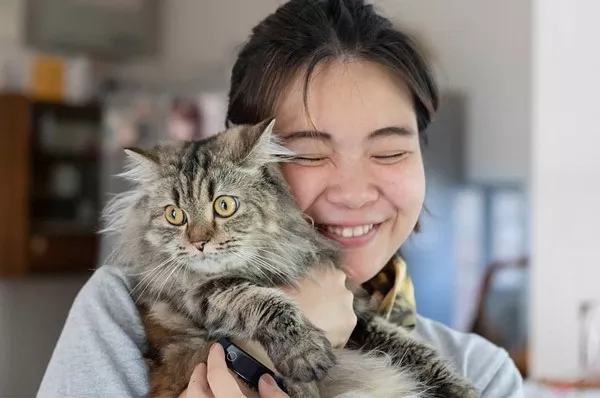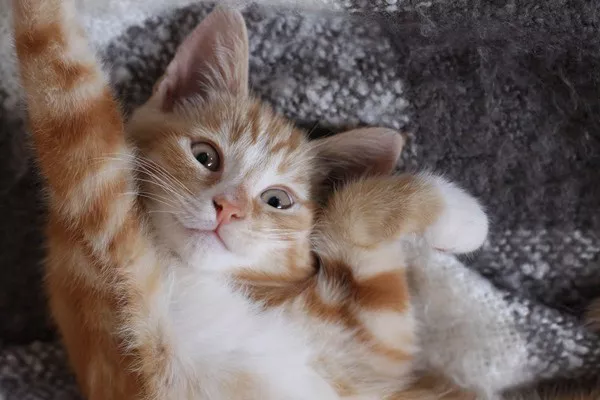Calico cats are known for their distinctive tri-colored coats, featuring a mix of white, black, and orange fur. While these feline companions are cherished for their unique appearance and often described as affectionate, some owners may encounter a puzzling behavior – Calico cats biting more frequently than other breeds. In this article, we will delve into the reasons behind why Calico cats may exhibit a tendency to bite more often and explore ways to manage and understand this behavior.
The Genetics of Calico Cats:
The striking coat pattern of Calico cats is linked to their genetics. Calico cats are almost always female, as the coat color is determined by the X chromosomes. The presence of two X chromosomes creates the possibility of a tri-colored coat. While the genetics behind their appearance are fascinating, it is crucial to recognize that genetics also play a role in shaping their behavior, including the tendency to bite.
Socialization Challenges:
Calico cats, like any other feline, require proper socialization during their early stages of life. If a Calico cat does not receive adequate socialization, it may lead to behavioral issues, including an increased likelihood to bite. Socializing kittens involves exposing them to various environments, people, and other animals to help them develop positive social skills. Calico cats that lack sufficient socialization may resort to biting as a way to express fear or discomfort in unfamiliar situations.
Territorial Instincts:
Calico cats, like many other feline breeds, possess strong territorial instincts. These instincts are deeply ingrained in their nature and can lead to aggressive behavior, including biting, when they feel their territory is threatened. Understanding and respecting a Calico cat‘s need for personal space and territory can go a long way in preventing unwanted biting incidents.
Communication through Biting:
Cats communicate using a variety of methods, and biting is one way they express themselves. Calico cats, in particular, may resort to biting as a form of communication to convey their feelings, whether it be excitement, frustration, or even playfulness. By paying attention to the context in which biting occurs, owners can better interpret and respond to their Calico cat’s communication needs.
Playful Nature:
Calico cats are renowned for their playful and energetic personalities. While playfulness is a charming trait, it can sometimes escalate into biting during play sessions. Owners should be mindful of their cat’s body language and use appropriate toys to engage in play, ensuring that the interaction remains enjoyable for both the cat and its human companions.
Stress and Anxiety Factors:
Calico cats, like any other pets, can experience stress and anxiety. Changes in their environment, such as moving to a new home, the introduction of a new pet, or alterations in the household routine, may trigger stress-related behaviors, including biting. It is essential for owners to be aware of these stressors and take steps to minimize their impact to foster a more secure and comfortable environment for their Calico companions.
Health Issues:
In some cases, excessive biting behavior in Calico cats may be indicative of underlying health issues. Dental problems, skin irritations, or pain due to various conditions can cause discomfort, leading to an increase in biting behavior. Regular veterinary check-ups are crucial to rule out any potential health concerns and address them promptly, ensuring the overall well-being of the Calico cat.
Training and Behavioral Modification:
Owners of Calico cats exhibiting excessive biting behavior may find value in training and behavioral modification techniques. Positive reinforcement, such as rewarding good behavior with treats or toys, can help redirect negative tendencies. Consistent and patient training efforts can contribute to a more harmonious relationship between owners and their Calico cats, minimizing biting incidents.
Neutering and Spaying:
Behavioral issues, including aggression and biting tendencies, can be influenced by the reproductive status of a cat. Neutering or spaying Calico cats at an appropriate age can help regulate hormonal influences, potentially reducing aggressive behaviors. Responsible pet ownership, including discussions with veterinarians about the optimal time for spaying or neutering, can contribute to a more balanced and well-behaved Calico cat.
Conclusion:
In conclusion, the tendency of Calico cats to bite more frequently can be attributed to a combination of genetic, social, and environmental factors. Understanding the unique characteristics and needs of Calico cats, along with proper socialization, training, and veterinary care, can help mitigate biting behaviors and foster a positive relationship between owners and their beloved tri-colored companions.
By investing time and effort in comprehending the nuances of Calico cat behavior, owners can ensure a happy and healthy life for their feline friends.
Related Topics:
Why Do Calico Cats Meow So Much? [3 Top Reasons]
8 Questions About Calico Cats — Answered
Why Are Male Calico Cats So Rare?


























